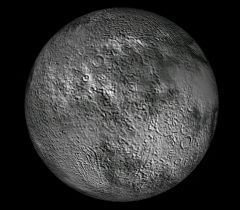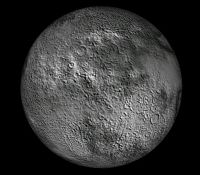Difference between revisions of "10 Hygiea"
Jump to navigation
Jump to search
m (Arvil moved page User:Arvil/Sandbox02 to 10 Hygiea: Move to article page.) |
(Corrected zip file.) |
||
| Line 4: | Line 4: | ||
|colspan="2" align="center"|[[Image:10Hygiea-MainBeltAsteroidszip.jpg|240px]] | |colspan="2" align="center"|[[Image:10Hygiea-MainBeltAsteroidszip.jpg|240px]] | ||
|- | |- | ||
| − | |colspan="2" align="center"|'''10 Hygiea in Orbiter 2002P3 from '' | + | |colspan="2" align="center"|'''10 Hygiea in Orbiter 2002P3 from ''MainBeltAsteroids051403.zip''''' |
|- | |- | ||
!bgcolor="lightsteelblue" colspan="2"|Designation | !bgcolor="lightsteelblue" colspan="2"|Designation | ||
| Line 44: | Line 44: | ||
|width="30%"|LAN||align="right" width="30%"|0 | |width="30%"|LAN||align="right" width="30%"|0 | ||
|- | |- | ||
| − | |width="30%"|Note||align="right" width="30%"|*Elements given are from 4 Vesta.cfg ( | + | |width="30%"|Note||align="right" width="30%"|*Elements given are from 4 Vesta.cfg (MainBeltAsteroids051403.zip) |
|} | |} | ||
| Line 50: | Line 50: | ||
== 10 Hygiea in Orbiter == | == 10 Hygiea in Orbiter == | ||
| − | 10 Hydiea was first introduced with the release of | + | 10 Hydiea was first introduced with the release of MainBeltAsteroids051403.zip in May 2003. Note that the landing surface as given in the config file is spherical, but the visual of Vesta is not, if you land, you will likely be above or below the visual surface. |
{| class="wikitable" style="text-align: center" | {| class="wikitable" style="text-align: center" | ||
| Line 64: | Line 64: | ||
== Gallery == | == Gallery == | ||
<gallery widths="200" heights="200"> | <gallery widths="200" heights="200"> | ||
| − | 10Hygiea-MainBeltAsteroidszip.jpg|<center>10 Hygiea in Orbiter 2002P3 from '' | + | 10Hygiea-MainBeltAsteroidszip.jpg|<center>10 Hygiea in Orbiter 2002P3 from ''MainBeltAsteroids051403.zip''</center> |
SPHERE image of Hygiea.jpg|<center>Hygiea as seen by the [[w:Very Large Telescope|Very Large Telescope]] in 2019</center> | SPHERE image of Hygiea.jpg|<center>Hygiea as seen by the [[w:Very Large Telescope|Very Large Telescope]] in 2019</center> | ||
</gallery> | </gallery> | ||
Revision as of 02:11, 4 September 2024
| 10 Hygiea | |
|---|---|

| |
| 10 Hygiea in Orbiter 2002P3 from MainBeltAsteroids051403.zip | |
| Designation | |
| Name | 10 Hygiea |
| Reference body | Sun |
| Planetary mean orbits | |
| Epoch | 2002.345 |
| Semimajor axis (a) | 353 447 079 923 m |
| Eccentricity (e) | 0.088877813 |
| Inclination (i) | 7.13484982° (0.124526621 radian) |
| Longitude of the ascending node (LAN, ☊) | 103.9471177° (1.814219452 radian) |
| Longitude of periapsis (ϖ) | 253.6260652° (4.426609907 radian) |
| Mean longitude (L) | 466.9193908° (8.149280711 radian) |
| Selected physical parameters | |
| Mean radius | 265000 km |
| Mass | 3×1020 kg |
| Rotation elements | |
| SidRotPeriod | 19231 seconds (5.342 hours) |
| SidRotOffset | 0 |
| Obliqutiy | 0.004014257 |
| LAN | 0 |
| Note | *Elements given are from 4 Vesta.cfg (MainBeltAsteroids051403.zip) |
10 Hygiea is the fourth largest object in the Main Asteroid Belt, and was discovered on 12 April 1849 by Annibale de Gasparis. It is named after Hygieia, Greek goddess of health.
10 Hygiea in Orbiter
10 Hydiea was first introduced with the release of MainBeltAsteroids051403.zip in May 2003. Note that the landing surface as given in the config file is spherical, but the visual of Vesta is not, if you land, you will likely be above or below the visual surface.
| Add-on | Source | Version | Author | Type | Release Date | Compatibility | Wiki article |
|---|---|---|---|---|---|---|---|
| Main Belt Asteroids v1.0 | O-F Resources | v1.0 | Unknown OHM Addon Developer | Scenery | 14 May 2003 | ||
See also
Gallery
Hygiea as seen by the Very Large Telescope in 2019
| edit The Solar System | |
|---|---|
| Central star |
Sun (Sol) |
| Planets |
Mercury - Venus - Earth - Mars - Jupiter - Saturn - Uranus - Neptune |
| Natural satellites |
Moon - Phobos - Deimos - Io - Europa - Ganymede - Titan - more... |
| Add-ons |
Planets - Dwarf Planets - Small objects - Natural satellites - Alternative star systems |

